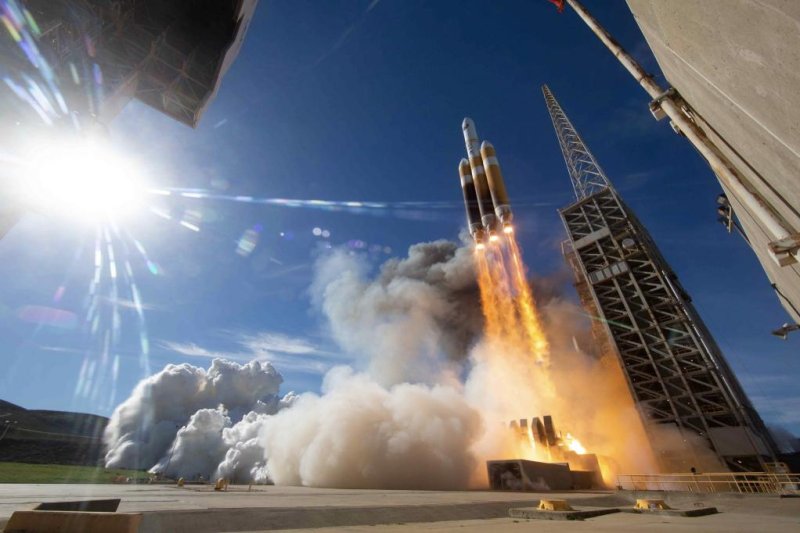A Delta Heavy rocket carrying a spy satellite launched Saturday morning from Vandenberg Air Force Base in California. Photo courtesy
United Launch Alliance/Twitter
Jan. 19 (UPI) -- A rocket carrying a spy satellite launched Saturday from Vandenberg Air Force Base in Southern California after bad weather and technical problems delayed the sendoff for more than one month.
At 11:10 a.m. Pacific time, the United Launch Alliance Delta IV Heavy rocket lifted off, carrying a U.S. National Reconnaissance Office satellite into orbit, United Launch Alliance said in a news release.
ULA in a joint venture of two competitors, Lockheed Martin and Boeing.
NROL-71 was the 132nd successful launch since the company was formed in December 2006, according to its website.
The alliance said the satellite is "in support of our country's national defense."
"Congratulations to our team and mission partners for successfully delivering this critical asset to support national security missions," Gary Wentz, ULA vice president of Government and Commercial Programs, said in a statement. "Thank you to the entire team for their perseverance, ongoing dedication and focus on 100% mission success".
The launch has been plagued at least five times with high winds, a hydrogen leak and glitches, KNBC-TV reported.
On Jan. 5, the mission was delayed indefinitely before being given a unanimous "go" on Friday, according to ULA's website.
On Dec. 8, the planned launch was scrubbed just 7.5 seconds before liftoff due to a technical glitch.
The launch could be seen for miles from the Lompoc-area launch site due toclear skies, the Daily Breeze reported.
The two side boosters separated about three minutes after the launch and core booster shut down and separated from the main vehicle after five minutes.
A few minutes later the fairings that make up the protective nose cone separated and fell back to Earth. These wasn't seen on the live video feed because it was cut off to help preserve the secrecy of the mission.
The Delta IV Heavy rocket includes three Rocketdyne liquid hydrogen/liquid oxygen engines that can produce a combined 2.1 million pounds of thrust.
The rocket is also used by the U.S. Air Force and NASA.
ULA's next planned launch is for the U.S. Air Force on a Delta IV rocket, scheduled for March 13 from Space Launch Complex-37 at Cape Canaveral Air Force Station in Florida.














